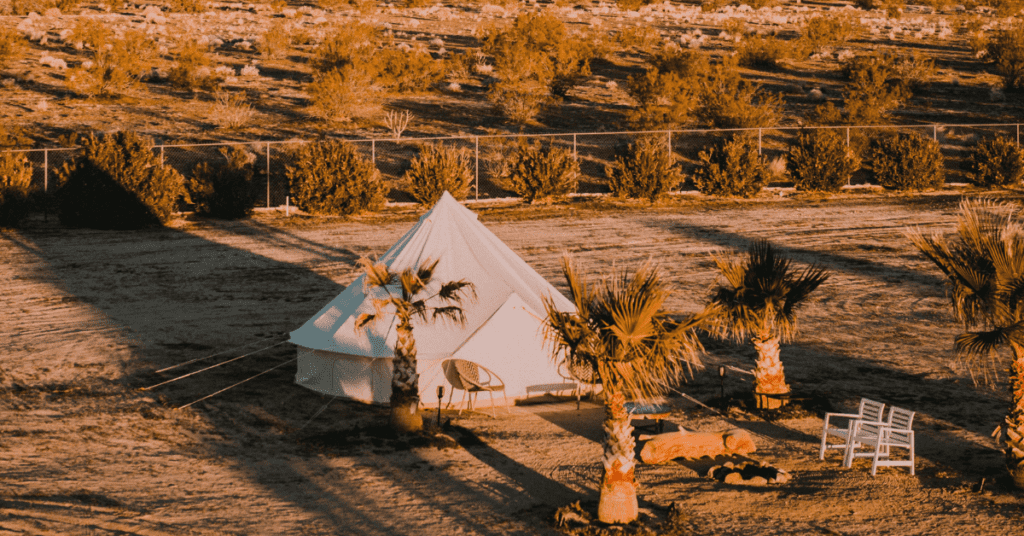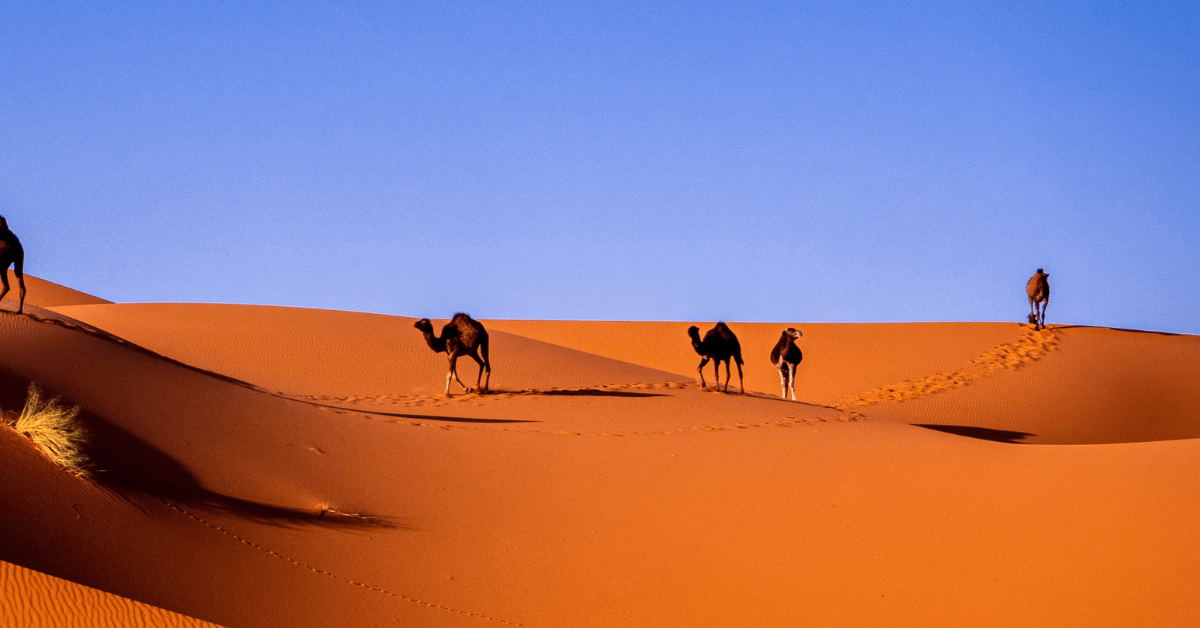The Sahara Desert is one of the most extreme environments on the planet, spanning over 3.6 million square miles and covering parts of 11 countries in North Africa. It’s a vast and rugged landscape that’s been the subject of countless films, books, and documentaries. But for outdoor enthusiasts who are looking to explore this desert, it’s important to understand the dangers that come with it.
The Sahara is known for its extreme temperatures, lack of water, venomous creatures, and the difficulty of navigation. These dangers can be life-threatening if not taken seriously. But, with proper preparation and caution, travelers can safely experience the beauty and wonder of this unique environment.
With that in mind, below, we’ll take a closer look at the dangers of the Sahara Desert and how to prepare for them. We’ll also provide tips and strategies for staying safe in the desert, ensuring you have a safe and unforgettable experience.
So, let’s dive into the dangers of the Sahara and how to prepare for them.
1. Extreme Temperatures
The Sahara Desert is known for its extreme temperatures, with daytime highs reaching up to 120°F (49°C) and nighttime lows dropping to below freezing. The intense heat can lead to heat exhaustion and heatstroke, while the cold nights can result in hypothermia.
To avoid these dangers, it’s important to take the necessary precautions and be aware of the signs and symptoms of these conditions.
Heat Exhaustion and Heatstroke
Heat exhaustion is a condition that occurs when the body overheats and is unable to regulate its temperature. Symptoms include dizziness, nausea, headache, weakness, and sweating. If left untreated, heat exhaustion can lead to heatstroke, which is a medical emergency.
Symptoms of heatstroke include a high body temperature, confusion, seizures, and loss of consciousness.
To prevent heat exhaustion and heatstroke, it’s important to stay hydrated and avoid overexertion during the hottest parts of the day. Wear loose, light-colored clothing that allows your skin to breathe and protect your head and face from the sun with a hat or scarf.
Take regular breaks in shaded areas or air-conditioned spaces, and consider carrying a personal misting fan or cooling towel.
Hypothermia at Night
While the daytime temperatures in the Sahara can be scorching, the nights can be surprisingly cold. To avoid hypothermia, which occurs when the body loses heat faster than it can produce it, it’s important to dress in layers and use appropriate insulation.
Bring a sleeping bag or blankets and wear warm clothing, such as a fleece jacket, hat, and gloves. Avoid sleeping directly on the ground, as it can be very cold and damp, and consider using a foam pad or inflatable mattress for insulation.
Tips for Dealing with Extreme Temperatures
- Drink plenty of water and electrolyte replacement drinks to stay hydrated.
- Avoid alcohol and caffeine, which can dehydrate the body.
- Eat light, high-energy foods such as trail mix and energy bars.
- Rest frequently in shaded areas or air-conditioned spaces.
- Monitor your body temperature and the temperature of those around you.
- Seek medical attention immediately if you or someone in your group shows signs of heat exhaustion, heatstroke, or hypothermia.
2. Dehydration and Lack of Water
One of the most significant dangers of the Sahara Desert is the lack of water. With limited sources of freshwater, it’s essential to plan carefully and bring enough water to stay hydrated throughout your journey. Dehydration can lead to serious health problems, including heat exhaustion, heatstroke, and kidney damage. Here are some tips for staying hydrated in the Sahara:
A. Plan Ahead
Before you set out on your journey, research the area and identify sources of water along your route. Carry enough water to last you for the entire trip, and consider bringing extra water in case of emergencies.
A good rule of thumb is to carry at least one gallon (3.8 liters) of water per person per day, and more if you’re traveling during the hottest months.
B. Filter and Purify Water
If you come across a water source in the Sahara, it’s important to filter and purify the water before drinking it. Even seemingly clean water can contain harmful bacteria and parasites that can cause illness. Use a water filter or purifier to remove impurities and boil the water for at least five minutes to kill any remaining bacteria.
C. Monitor Your Hydration Levels
Pay attention to your body and monitor your hydration levels regularly. Signs of dehydration include dry mouth, thirst, headache, fatigue, and dizziness. If you’re feeling thirsty, it’s a sign that you’re already dehydrated, so make sure to drink water regularly, even if you don’t feel thirsty.
D. Avoid Dehydrating Substances
Avoid substances that can dehydrate the body, such as alcohol, caffeine, and sugary drinks. Stick to water and electrolyte replacement drinks to replenish fluids and essential minerals lost through sweating.
E. Protect Your Water Supply
Protect your water supply from evaporation and contamination by storing it in airtight containers and keeping it in a cool, shaded area. Don’t share your water supply with animals, as they may carry harmful bacteria that can contaminate your water.
3. Sandstorms
Sandstorms are another significant danger of the Sahara Desert. These powerful storms can occur suddenly and without warning, making it difficult to seek shelter. The high winds and flying sand can cause injuries and respiratory problems, making it crucial to be prepared and take the necessary precautions to avoid them.
A. Know the Signs
Be aware of the signs that a sandstorm is approaching, such as a drop in temperature, a change in wind direction, and darkening skies. If you notice these signs, seek shelter immediately.
B. Find Shelter

If you’re caught in a sandstorm, seek shelter immediately. Look for a sturdy building or structure that can protect you from the flying sand and debris. If you can’t find shelter, cover your mouth and nose with a cloth or mask to avoid inhaling sand particles.
C. Protect Your Eyes
Wearing protective eyewear, such as goggles or sunglasses, can help prevent sand particles from getting into your eyes. This is essential as it can cause corneal abrasions, which can lead to infections and even blindness in severe cases.
D. Cover Exposed Skin
Covering your skin with long-sleeved clothing and pants can help protect your skin from abrasions and prevent sand particles from getting into your clothes.
E. Stay Hydrated
Sandstorms can cause dehydration due to increased sweating caused by heat and dry air. Make sure to drink enough water and electrolyte replacement drinks to stay hydrated during a sandstorm.
F. Stay Informed
Stay up-to-date with weather reports and alerts to stay informed about potential sandstorms. Make sure to plan your trips accordingly and avoid traveling during times when sandstorms are most likely to occur.
4. Venomous Creatures
The Sahara Desert is home to a wide variety of venomous creatures, such as scorpions, snakes, spiders, and insects. While most of these creatures are not aggressive and will avoid human contact, it’s essential to be aware of the dangers and take necessary precautions to avoid their bites and stings.
A. Wear Protective Clothing
Wearing protective clothing, such as long-sleeved shirts, pants, and closed-toe shoes, can help prevent bites and stings. It’s also advisable to tuck your pants into your socks to avoid insects crawling up your legs.
B. Use Insect Repellent
Using insect repellent can help prevent bites from insects such as mosquitoes, flies, and ticks, which can carry diseases. Choose a repellent that contains at least 20% DEET and follow the instructions carefully.
C. Avoid Walking Barefoot
Walking barefoot increases the risk of getting stung by scorpions or bitten by snakes. It’s essential to wear shoes or boots with sturdy soles to protect your feet.
D. Shake Out Your Clothes and Shoes
Before putting on your clothes and shoes, make sure to shake them out to avoid any venomous creatures that may have taken shelter in them.
E. Know the Symptoms
It’s crucial to know the symptoms of a venomous bite or sting, such as swelling, redness, pain, and difficulty breathing. If you experience any of these symptoms, seek medical attention immediately.
F. Carry a First Aid Kit
Carrying a first aid kit with you can be helpful in case of an emergency. Make sure to include items such as antihistamines, pain relievers, and a venom extractor.
Related: Surviving the Sahara: A Guide to Living in the World’s Harshest Desert
5. Navigation and Getting Lost
Navigating the Sahara Desert can be challenging due to its vastness and lack of clear landmarks. It’s essential to have a solid plan, map, and navigation tools to avoid getting lost in the desert.
- Plan Your Route:
Before setting out on your journey, plan your route and mark it on a map. Identify key landmarks, such as mountains, rivers, or roads, that can help guide you in the right direction.
- Bring a Compass and GPS:
Bringing a compass and GPS can help you navigate the desert accurately. A compass can help you find direction when the sun is not visible, while a GPS can provide you with precise location information.
- Check the Weather Forecast:
Checking the weather forecast before your journey can help you avoid getting lost in a sandstorm or extreme temperatures. Plan your trip during the cooler months when the weather is more moderate.
- Bring Enough Supplies:
Make sure to bring enough food, water, and other supplies to sustain you during your journey. Pack extra supplies in case of an emergency or if you get lost.
- Stay on the Path:
Stay on the path and avoid taking shortcuts, as they may lead you astray. Follow the plan you made and the landmarks you identified to stay on course.
- Know How to Signal for Help:
Knowing how to signal for help can be critical in case of an emergency. Bring a whistle, flare, or mirror to signal for help, and make sure to learn the international distress signal of three consecutive blasts.
Conclusion – Why Is The Sahara Desert Dangerous?
The Sahara Desert is dangerous due to its extreme temperatures, dehydration and lack of water, sandstorms, venomous creatures, and navigation challenges that can lead to getting lost.
But with proper planning and preparation, exploring the Sahara can be a rewarding and unforgettable experience. However, it’s important to respect the desert’s power and potential dangers and take every precaution to ensure your safety.
So, go ahead and plan your adventure, but remember to stay safe and respect the power of the desert.
